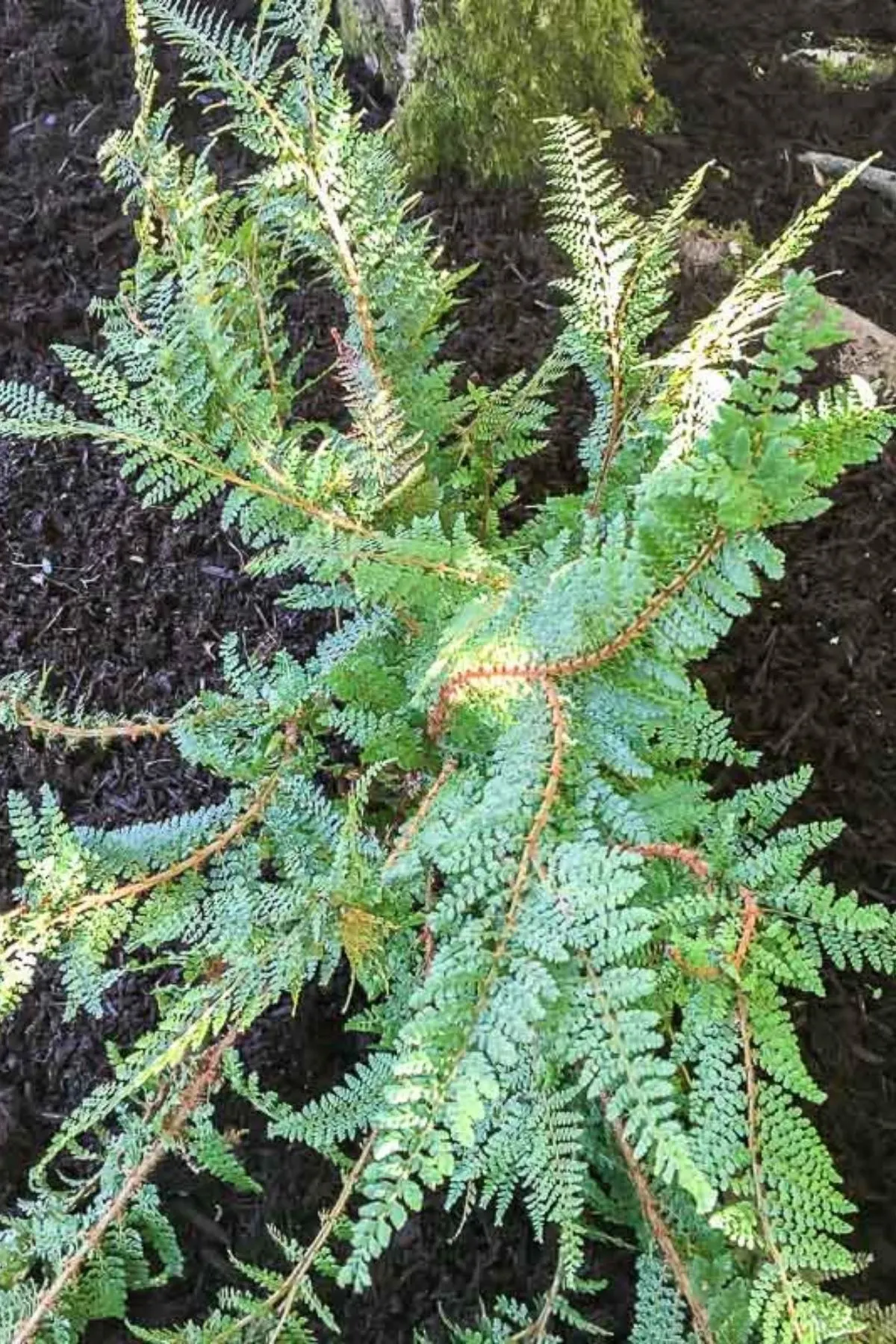Learn how to grow Western sword ferns in your woodland garden! These huge evergreen ferns can tolerate a wide variety of conditions in almost any garden landscape.

Western sword fern (Polystichum munitum) thrives in many garden landscapes, tolerating drier conditions, lower-quality soils, and more direct sunlight than many other fern species. You can plant it on slopes for erosion control or let it spread into lush ground cover under trees and tall shrubs.
The arching dark green fronds spring from a tight crown at the base, contrasting nicely with other shade-loving plants such as hydrangeas and rhododendrons. In addition, the cut fronds make an excellent backdrop in floral arrangements.

In nature, this robust fern prefers the company of Douglas fir, cedar, and redwood, where it often forms a dense and verdant carpet beneath these trees in low to mid-elevation forests. It gets its name from the long, sword-shaped fronds that regularly grow to two feet and can even reach four feet or longer in optimum conditions.
This post contains affiliate links for your convenience. Purchases made through these links may earn me a small commission at no additional cost to you.
Where to Get Western Sword Ferns
Finding this familiar, native fern at garden centers and online is easy. However, look for plants labeled with the Latin name Polystichum munitum. Other fern species are also called sword ferns but do not have the same growth habit.
You can easily transplant sections of fern rhizomes or divide a mature fern into several clumps to grow new plants. When dividing a plant, make sure that a few fronds remain attached to the roots.

You can also propagate this fern from light yellow spores that grow in brown capsules on the back of the fronds when the spores mature in July and August.
When to Plant Western Sword Ferns
The best time for transplanting and dividing western sword fern is in the spring because this gives the transplants plenty of time to grow roots and get established before cold weather arrives.
However, if you live in a location with winters that don't get too cold, you can put them in the ground in autumn as well. We live in the Pacific Northwest, and I've moved these ferns around in late fall without any issues.

Where to Plant Western Sword Ferns
Western sword ferns are native to western North America in zones 5 to 9. Like many other types of ferns, it can thrive in deep shade or dappled shade, so you can pair it with shade loving flowers for a beautiful contrast of colors.
You can also plant this fern in locations that get some direct sun, as long as you water it during hot weather. But you may find that the tips become brown and crispy if exposed to too much sunlight.
Ferns are juglone tolerant, meaning that they aren't bothered by the toxin that walnut trees produce to prevent competition from understory plants. We have several large sword ferns thriving under our walnut tree where most plants yellow and die.

It's also less fussy about soil conditions than many other fern species. It does best in slightly acidic soils but it can handle less than ideal conditions as well. Nonetheless, if you plant it in a spot with fertile soil, it is likely to become a larger and more vigorous plant.
It's also possible to grow sword ferns in a pot! It may not reach its full size in a container, but it can create a beautiful screen in shady areas. Repot your fern once a year to provide more room for the roots to grow.

How to Plant Western Sword Ferns
Dig a hole larger than the root ball or rhizome, and mix in compost to provide humus rich soil. While this fern is not generally fussy about soil, it won't do well in soggy ground. Be sure to plant it in a spot with good drainage or amend the area with sand, perlite, or vermiculite to improve drainage conditions around the roots.

Transplant during cool weather or in the late afternoon to avoid transplant shock. When planting a rhizome, set it close to the soil surface and cover it lightly with dirt. If you are planting a divided section, do not cover the top of the root crown with soil.
Water right after planting and keep the soil moist but not soggy for the first year. A layer of mulch will prevent the soil from drying out too quickly.
How Far Apart to Plant Western Sword Ferns
These ferns grow to a diameter of two to three feet, so leave at least two feet between plants, so they have plenty of space to spread out when they mature.

Caring for Western Sword Ferns After Planting
In most cases, you only have to prune dead fronds and broken stems to keep your sword fern looking great. However, if you find that your plant is getting a little scraggly, you can cut it down to the ground in late winter before fiddleheads start to emerge. It will regrow with fresh fronds in spring, and fill out over the summer.

Keep the soil moist the first year after planting. After that, water the plants in fall and winter if conditions are dry. Mature plants become somewhat drought-resistant in summer.
As with other ferns, this variety does not need much fertilizer. A yearly layer of good-quality compost or mulch on the soil surface is usually sufficient for providing nutrients.
If the plants are struggling and weak, a small amount of slow-release 10-10-10 fertilizer might help. However, it is easy to harm ferns by over-fertilizing, so be cautious about applying commercial fertilizer.
Frequently Asked Questions about Western Sword Ferns
How long do western sword ferns live?
These ferns have an astounding potential lifespan of up to 500 years. These tough plants will outlive anything else in your garden!
How fast do western sword ferns grow?
The individual fronds unfurl and grow quickly, but overall, these ferns do not grow especially fast. Expect a newly planted fern to take up to five years or more to reach its full, mature size.
Do western sword ferns spread?
Yes. This fern species spreads by rhizome and will expand to cover a large area with the right growing conditions. However, this process will take many years, so don't expect it fill in your garden quickly.
Check out these other articles about ferns!


